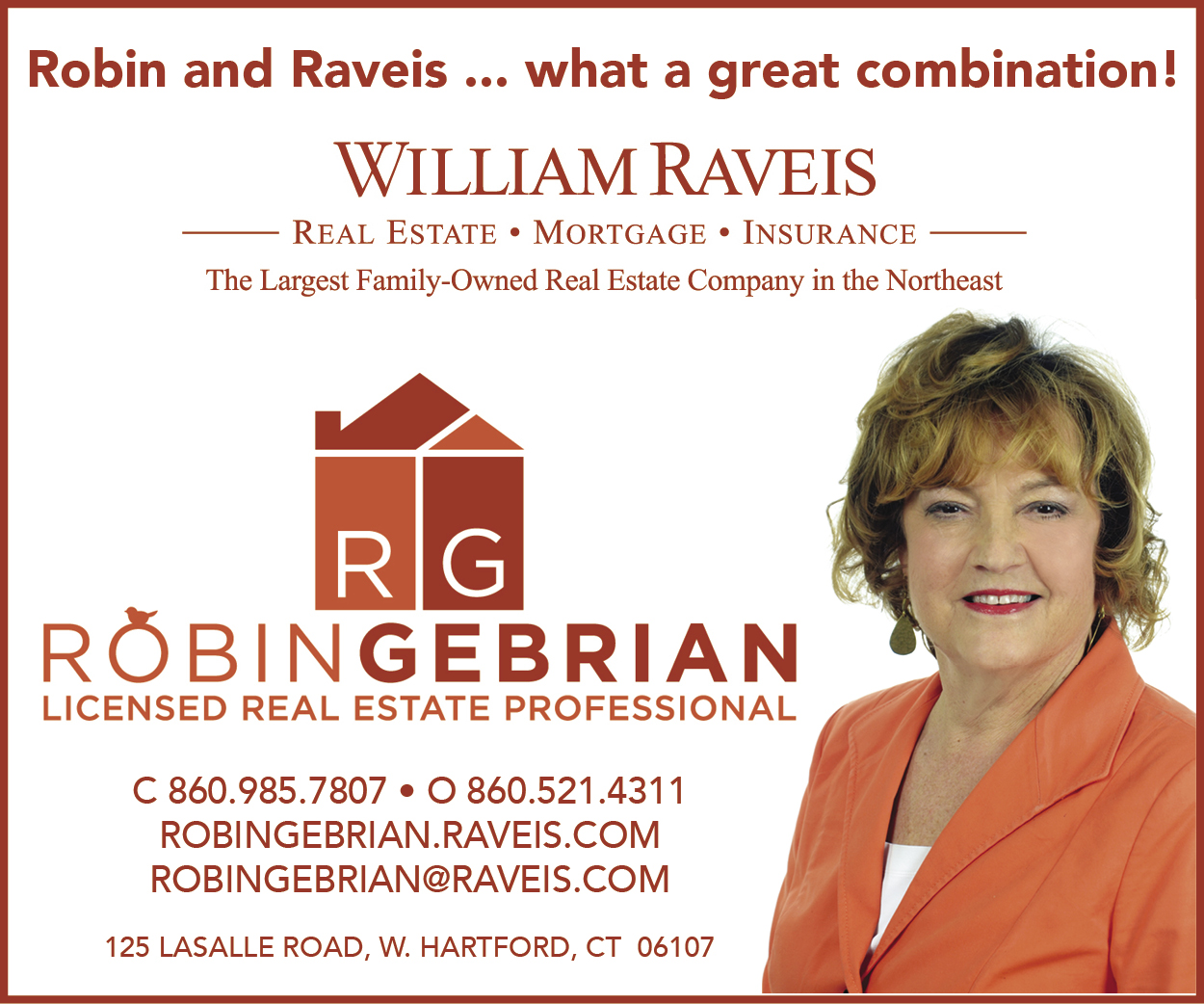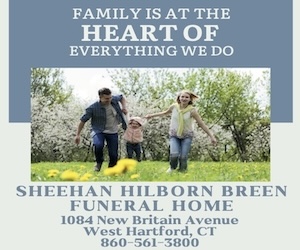
By Cindy Mindell
Since Congregation Rodfe Zedek of Moodus merged with Congregation Beth Shalom of Deep River in the mid-‘90s, the resulting amalgam of the two Connecticut River Valley synagogues — Congregation Beth Shalom Rodfe Zedek (CBSRZ) in Chester – has come to be recognized not only as a house of worship, but also as a cultural center and architectural landmark, designed in part by congregant and conceptual-art pioneer Sol LeWitt, z”l, a Hartford native who died in 2007.
“The building is a three-dimensional expression of Sol LeWitt’s art and his interpretation of the spiritual and the infinite,” says CBSRZ president Stephen Davis. “The Ark features his interpretation of the Star of David and is the symbol of our congregation. It means that art and culture are really in the DNA of the congregation.”
This dual and intertwined identification as both a religious and cultural center inspired the Ledger to survey several synagogues throughout the state to understand how cultural programming fits into their mission and operation, and into Jewish life in general. Is that concert or cooking demonstration or yoga class “Jewish” just because it takes place at a synagogue?
First, some history.
“The synagogue was always a beit midrash – an educational center, probably more a house of study and inquiry than a house of prayer,” says Rabbi Joshua Hammerman of Temple Beth El in Stamford. “It was also called beit knesset, a house of gathering. But it was never called a beit tefila, a house of prayer.”

Rabbi Greg Wall of Beit Chaverim Synagogue of Westport/Norwalk, plays with other klezmer musicians at his installation, held at Westport Town Hall auditorium in November 2013.
While the etymology may have steered away from an emphasis on prayer, the American model of a synagogue was based primarily on that function, according to Rabbi Greg Wall of Beit Chaverim Synagogue of Westport/Norwalk.
“But the beit knesset really needs to be a portal into Jewish life,” he says. “Our tradition teaches that there are 70 faces to Torah, meaning a myriad of approaches to make our heritage
relevant to our daily lives. The synagogue, likewise, must provide the figurative 70 approaches to making Jewish life relevant.”
And that’s where lectures and knitting circles and film festivals come in; programming that is just as essential to a thriving Jewish community as are religious services and holiday celebrations. What’s more subtle and difficult to determine is whether an activity that doesn’t require a siddur or Jewish text somehow dilutes the Jewish religious experience or community.
Take, for example, “Shabbat Your Way,” a smorgasbord program planned for late February at Temple Sinai in Stamford. The “something for everyone” menu will include Friday night services and a whole lot more: yoga, knitting, children’s and teens’ activities, and even a place (for adults) to drink beer and play darts.
“I plan to point briefly to the spirituality of playing darts, but without going overboard,” says Rabbi Jay TelRav. “Maybe, as a congregant, you’ll come to drink some beer and play darts and if you do, maybe your spouse or partner will find another interesting activity to engage in and then you’ll bring your children. For me, to get a family into the synagogue for Shabbat, that’s very appealing and a real win.”
Beyond generating curiosity around how he will connect the act of throwing a sharp object at a board with enjoying a religious experience, “the higher goal is elevating, in the minds of our members, the value that the synagogue plays in their lives,” TelRav says.
This holistic approach to synagogue engagement, while steeped in the model of “24/7 Judaism,” as Wall calls it, is also a reflection of economic realities.
“In an economy where funds are so tight that, if a family has to decide between synagogue membership and a vacation, I understand if they choose the vacation,” TelRav says. “But if, when the membership bill arrives in the mail and the family can say, ‘We’ve had some good experience at synagogue’ and pay their dues, that allows us to continue our mission.”

World renowned klezmer, classical and jazz clarinetist David Krakauer performed at Beth El Temple in West Hartford in June 2013, as part of the synagogue’s music series.
The idea behind cultural programming is to simply get Jews to enter their communal home to experience Judaism or Jewishness as a complete thing. Otherwise, by presenting “religious” and “cultural” as separate facets of Jewish life, an experiential dualism is reinforced, says Rabbi Seth Riemer of Temple Beth Torah in Wethersfield.
“Then, people’s Jewishness and life experiences are somehow at odds with each other and my belief is that they’re not,” he says. “It makes people feel that their experience is somehow not real. So many people I talk to see their lives and then their Jewish lives, because no one gives them the opportunity to make a connection between the two. Synagogues that encourage this notion that there’s Judaism and we’re here to support Judaism do a disservice to people.”
Rabbi Yehudah Kantor, co-director of Chabad of Westport, sums up the seamless nature of Judaism that Riemer advocates. “There is quite an intermingling between Jewish culture and Jewish spirituality,” he says. “The existence of a Jew is one of totality. The way one speaks, eats, and behaves is as critical to the Jewish experience as the way one learns Torah and engages in ritualistic activities. As such, even something as simple as gefilte fish on Shabbat or latkes on Chanukah has a relevance.”
The role of Jewish clergy is to show people how they are already living Jewish lives and how anything they are engaged in can be seen as part of their Jewishness.
“I provide many opportunities for people to decontextualize activities and interests they are already interested in by experiencing them in the synagogue,” says Wall, a professional musician who brings many musical performers and genres into Beit Chaverim to provide enjoyment and spark “a Jewish conversation.”
In addition to the kind of extensive menu of classes and lectures offered by many synagogues, Wall also focuses a lot of time and energy on education and Jewish literacy opportunities.
“I view this as cultural, because our Jewish literacy IS our culture,” he says. “We make our own religious choices based on our familiarity with our stories, values, and core texts. One need not be ‘religious’ to engage with Jewish wisdom in a meaningful, creative, and satisfying way.”
Riemer, who writes plays and music to serve as a creative role model for his congregation, echoes this back-to-basics approach to engaging Jews culturally, citing a monthly Shabbat morning Torah study session at Temple Beth Torah. “People come and have a great time reading the text and using it as a springboard for some fascinating reflections of a philosophical, theological, anthropological, and generally cultural nature,” he says. “In that way, we’re being artists.”
In fact, Riemer says, quoting colleague Rabbi Daniel Kamesar, z”l, “the Jewish art form is Midrash. We don’t need to go outside the Jewish experience to recognize our artistic and creative possibilities; it’s all there. We can put old wine in new bottles and discover new things because our tradition itself respects the new.”
Rabbi Michael Friedman of Temple Israel in Westport takes issue with the expression, “old wine.” Rather, “each generation finds new creative avenues to explore and express what it means to be Jewish,” he says. “In every possible way we see it – religiously, culturally, through cuisine or social justice, and the new crop of young Jewish writers like Jonathan Safran Foer and Dara Horn and Nicole Krauss and Nathan Englander. It’s not old wine in new bottles, but completely new wine.”
Nowhere is Jewish cultural innovation more publicly apparent than in the area of Jewish music – also a topic of ongoing debate when discussing changes to the content of a religious service. But whatever sacred cows may inhabit one’s personal psychic shed, it should be recognized that the Adon Olam melody so familiar in American Ashkenazi sanctuaries originates with a German drinking song.

Stamford-based musician-composer Beth Styles created and directs “The Shabbat Experience,” a Friday-night service featuring prayers, meditation, and music. The program was first hosted by Temple Sinai in Stamford in June and then by Temple Beth El in Stamford in December (pictured here), with Styles’s New World Chorus and the Temple Sinai’s Kolot Sinai chorus accompanied by Styles and several area musicians.
Now in its 24th year, the music series at Beth El Temple in West Hartford is perhaps among the longest-running in the state. BEMA (Beth El Music & Arts Committee), under the artistic direction of Cantor Joseph Ness, brings together the synagogue’s choirs and orchestra with guest musicians from the community and beyond, who perform a range of Jewish-themed and secular music, by Jewish and non-Jewish composers, often with accompanying educational programming. The programs are designed not only for Beth El congregants, but for the community at large, weaving together the religious and cultural aspects of music.
“Temple members often report that listening to and/or performing in live musical performances of liturgical works often positively impact their prayer experience by providing deeper appreciation and more paths to personal engagement with the traditional Jewish liturgy,” says Eliane Freund, BEMA co-chair.
“For Cantor Ness and many audience members, the experience of live musical performances is often as spiritually uplifting as religious services and often informs the religious service experience, as works of great Jewish liturgical composers are performed with the benefit of gifted interpreters and orchestral accompaniment.”
Music is also a high priority at Temple Beth El in Stamford, whose cantors bring a willingness to be on the cutting edge and try different things, says Hammerman.
“There is a Darwinian aspect to this that we must understand,” he says. “Whatever brings life to our worship will survive, and whatever doesn’t will not. The Germanic-Eastern European music that energized synagogue life for two centuries did its job well, but its day is done, except as it is being synthesized into contemporary forms. The psalms themselves implore, ‘Shiru l’Adonai shir chadash,’ ‘Sing unto Adonai a new song.’”
Music can serve to break down obstacles to religious engagement, says TelRav, but that’s not a new phenomenon in a Jewish context: consider the niggun, a wordless tune used as prayer and introduced by Chassidism founder, the Baal Shem Tov. “His idea was to remove the significant barriers to participation in religious services for those who were not not lettered or wealthy,” TelRav says.
And if one can hum, one can be Jewish with every breath, says Wall. “I am a great believer in informal Jewish education and ‘stealth’ Jewish education,” he says. “The Judaism I teach – and hopefully model to my congregants – is a 24/7 model. We can and should act like Jews in any environment. There are always moments – from eating and drinking, to greeting others, to experiencing art, music, theater or any other entertainment – when we have to make quick choices, and these are wonderful opportunities to connect Jewishly with people.”
With so many choices and so few boundaries facing American Jews, the synagogue may seem less important to communal life – witness the declining affiliation cited in the 2013 Pew study – but may, in fact, be more necessary than ever.
“In a day and age where Jews can be and go and live and work and learn wherever they want, the synagogue has to be the center of gravity that holds the community together,” says Friedman. “To do that, we have to offer lots of different entry points, so we have to draw people in through lifecycle, cooking, literature, family events, worship, etc. etc. etc.”
In fact, on the occasion of its centennial, Congregation Beth Shalom Rodfe Zedek in Chester (the original Congregation Rodfe Zedek was formed in Moodus in 1915) is trying to secure its relevancy for the next hundred years, inspired by the tagline, “ancient and cool.”
“We believe that the synagogue of the future is really about meeting people’s search for purpose in the places that they are,” says CBSRZ president Stephen Davis. “We want to develop multiple paths for people to find purpose in their lives, together. We want our synagogue to be a kind of hub – for the congregation and for the community — where people can struggle with those issues and enjoy their experiences as well.”
Sweet Honey in the Rock to perform in Chester on MLK weekend
 Luring the Grammy Award nominated African American singers, Sweet Honey in the Rock, to perform during the Dr. Martin Luther King, Jr. weekend was a dream of Miriam Gardner-Frum, longtime director of Congregation Beth Shalom Rodfe Zedek (CBSRZ)’s concert series, Music & More. Now that dream has been realized. The internationally renowned group will perform in concert at the Chester synagogue on Sunday, Jan. 18, at 3 p.m..
Luring the Grammy Award nominated African American singers, Sweet Honey in the Rock, to perform during the Dr. Martin Luther King, Jr. weekend was a dream of Miriam Gardner-Frum, longtime director of Congregation Beth Shalom Rodfe Zedek (CBSRZ)’s concert series, Music & More. Now that dream has been realized. The internationally renowned group will perform in concert at the Chester synagogue on Sunday, Jan. 18, at 3 p.m..
“I thought how amazing it would be to have them here in our beautiful synagogue,” says Gardner-Frum, who over the years has brought many remarkable musicians to CBSRZ. “They combine two exceptional features – great a capella music that lifts hearts even as it calls attention to great injustices of our world. This seemed a natural fit for us at CBSRZ. Through our social action efforts, we do much work along those lines as well.”
Carol Maillard, one of the founding members of the group and still singing with it, says that Sweet Honey has celebrated Dr. King’s birthday in concert many times but never in a synagogue. “We’re very excited about coming and we hope that folks will come with an open mind and heart. We hope they’ll feel uplifted and won’t be afraid to show they’re having a good time,” she says.
The name of the performance group was indeed derived from a song, based on Psalm 81:16, which tells of a land so rich that when rocks were cracked open, honey flowed from them.
Rabbi Rachel Goldenberg, the congregation’s spiritual leader, says this concert is a perfect way to celebrate Dr. King’s legacy. “We honor him every year because of the Jewish People’s historical commitment to the struggle for human rights. But more importantly, we recommit ourselves to the ongoing work of demanding justice and equal treatment for all people living in this country.”
For more information, please call CBSRZ at (860) 526-8920.








 Southern New England Jewish Ledger
Southern New England Jewish Ledger









